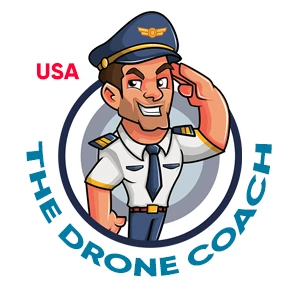
FAA Part 107 Drone Certification
Your Guide To Obtaining FAA Part 107 Certificate
WHO MUST OBTAIN PART 107 DRONE CERTIFICATION
If you want to earn an income flying your drone commercially, then you must obtain your FAA part 107 drone certification. In addition, you must also pass the FAA Aeronautical Knowledge Exam with at least a 70% passing grade.
Conversely, if you plan to fly your drone recreationally, then you do not need to receive your FAA part 107 drone certification. However, the FAA does require recreational flyers to pass an online aeronautical knowledge and safety test. The test is free and can be completed through any FAA approved TRUST testing administrators. Our pick is the Boy Scouts of America website as it’s well designed and easy to follow.
For example, if you’re a real estate agent and your client asks you to provide photographic aerial images of a property for sale, then the agent must be part 107 certified. Being that, the agent will eventually earn an income or commission after the home sells so therefore, the agent must be certified.
In addition, if the homeowner wants their real estate agent to use drone images taken by the home seller, then that home seller must be part 107 certified. Being that, the homeowner is using images to further an income derived from those drone images.
ADDITIONAL PART 107 REMOTE PILOT GUIDELINES
- Flying daylight or evening hours (rule changed April 2021).
- Flying under 400 feet AGL (above ground level).
- Operations above 400 feet AGL permitted when sUAS is within a 400-foot radius of the structure.
- Maintaining direct line-of-sight of your drone.
- Not permitted to fly in National Parks or National Monuments.
- Not allowed to fly over people unless people are directly involved in operations. On the other hand, if a person is protected within a vehicle or building, it is acceptable to fly above them or; if an operator is not certified and is using a low-risk drone as outlined in the new rule under part 107.
- The FAA requires drones weighing more than .55 lbs to be registered.
Notwithstanding, government entities or organizations such as law enforcement agencies, public universities, state governments, or local municipalities, may operate an sUAS under the rules of Title 14 Code of Federal Regulations Part 107 (14 CFR part 107). Similarly, one must obtain a blanket public Certificate of Waiver or Authorization which permits nationwide flights in Class G airspace at or below 400 feet. Self-certification of the UAS pilot and the option to obtain emergency a Certificate of Authorization under special circumstances.
HOW TO PREPARE FOR THE PART 107 AIRMAN KNOWLEDGE TEST
- Important to realize, one should purchase a study course if one feels the need. The Drone Coach part 107 course provides access to nearly 400 practice questions and practice quizzes specific to each lesson. In addition, you’ll have access to two timed 60-question practice exams, all course materials, and access to over 7 hours of video course studies too.
- Watch our free video tutorials on YouTube (the same videos in our paid course, but without all of the practice exams, practice quizzes, and printed material.
ADDITIONAL FACTS REGARDING PART 107 DRONE CERTIFICATION
- Pilots with a 14 CFR part 61 certificate do not need to complete a part 107 training course. Provided you’ve completed a flight review within the previous 24 months, you can complete a free online training course. Visit the FAA Safety Team website and complete Part 107 Small Unmanned Aircraft Systems (sUAS) ALC-451.
- Medical exams not required.
- Register your drone at https://faadronezone.faa.gov/
- The FAA requires drone owners to label their sUAS with an FAA registration number.
- As of July 1, 2021, the cost to take the FAA Part 107 Airman Knowledge Test is $175.
- It takes about 48 hours for your Part 107 certificate to propagate into the FAA online IACRA system.
- When applying for your Airman Certificate on the IACRA website (https://iacra.faa.gov/IACRA/), but sure to enter all information correctly. Providing inaccurate information is the leading cause for delayed approvals.
- Temporary Part 107 Certificates issued within 10 business days. Remote pilots may commercially operate their sUAS using the temporary certification. It takes approximately six to eight weeks for the FAA to mail your actual certificate to you.
